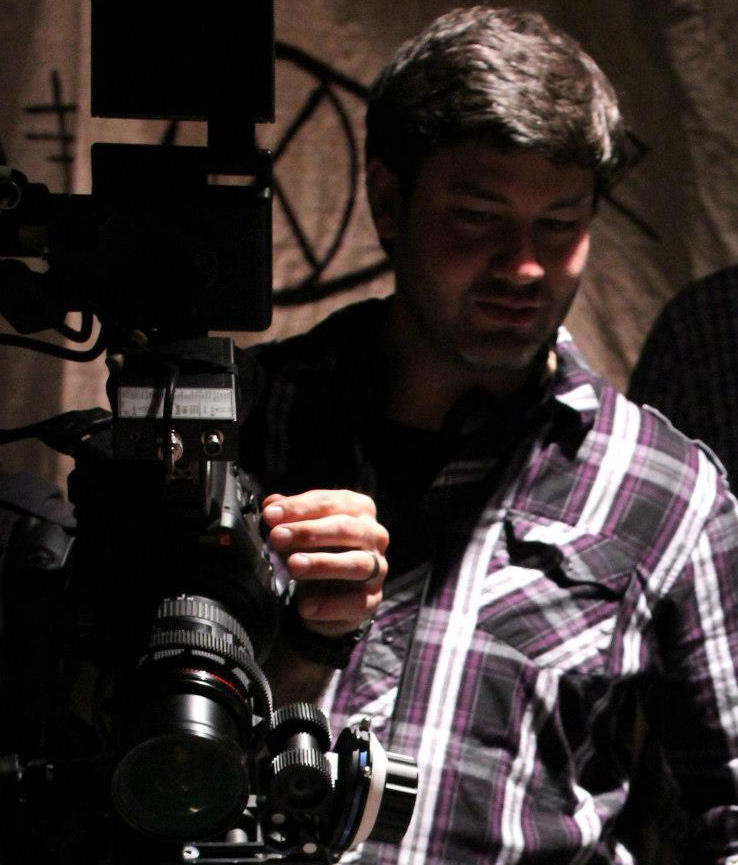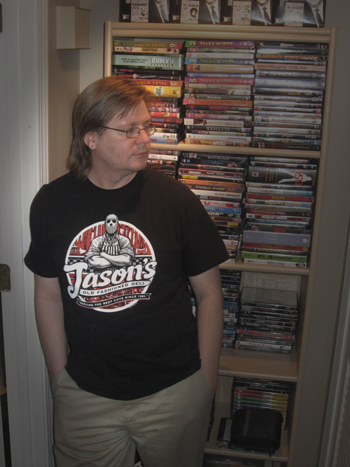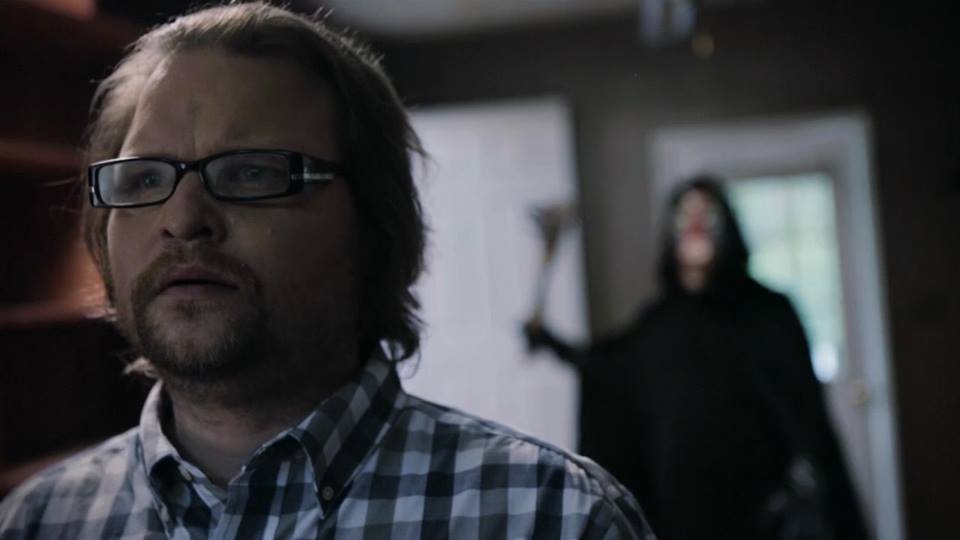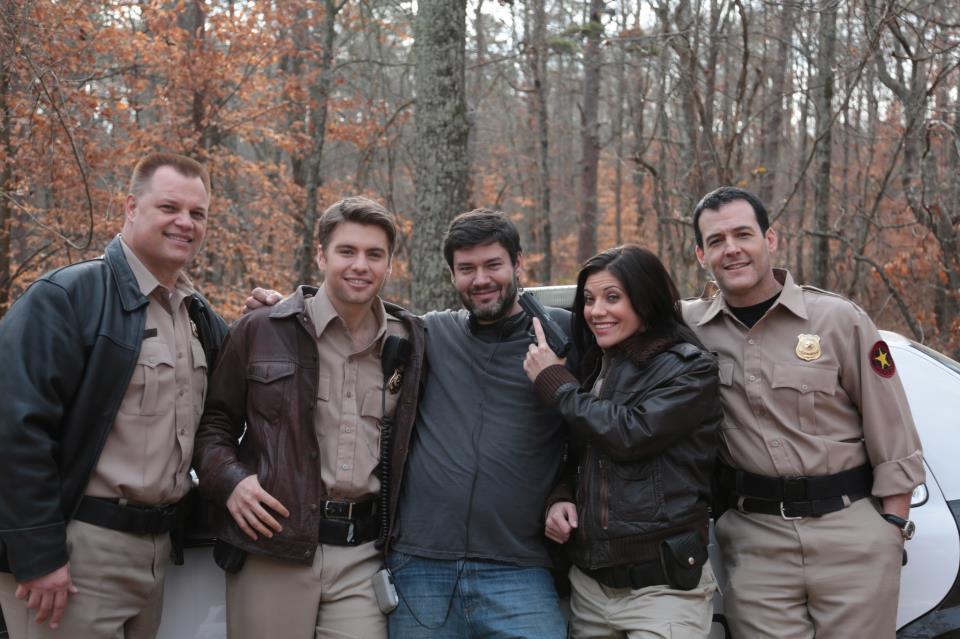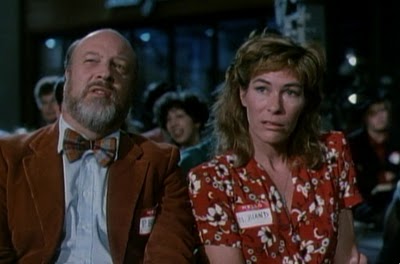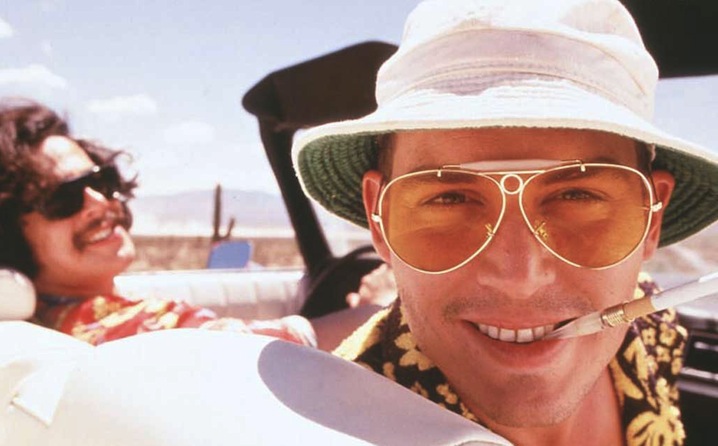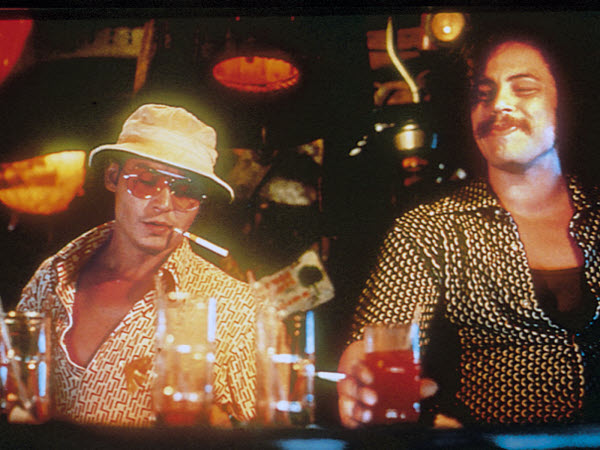 THE MORNINGSIDE MONSTER, a new locally produced independent horror film, will have its World Premiere at the Plaza Theatre on January 14 at 7 pm and 9:45 pm. Both screenings will be followed by Q&As with filmmakers Jayson Palmer and Chris Ethridge, as well as cast members Nicholas Brendon (BUFFY THE VAMPIRE SLAYER), Robert Pralgo (THE VAMPIRE DIARIES) and Amber Chaney (THE HUNGER GAMES). Tiffany Shepis (THE FRANKENSTEIN SYNDROME) and Cat Taber (STAR WARS: THE CLONE WARS) are also in the movie.
THE MORNINGSIDE MONSTER, a new locally produced independent horror film, will have its World Premiere at the Plaza Theatre on January 14 at 7 pm and 9:45 pm. Both screenings will be followed by Q&As with filmmakers Jayson Palmer and Chris Ethridge, as well as cast members Nicholas Brendon (BUFFY THE VAMPIRE SLAYER), Robert Pralgo (THE VAMPIRE DIARIES) and Amber Chaney (THE HUNGER GAMES). Tiffany Shepis (THE FRANKENSTEIN SYNDROME) and Cat Taber (STAR WARS: THE CLONE WARS) are also in the movie.
Georgia’s tax breaks for film production not only have attracted Hollywood shoots and high-profile TV series, but also have created a vibrant environment for local independent filmmakers including horror. Jayson and Chris’s previous collaborations include a video for the band Fader Vixen and the short film SURVIVOR TYPE, based on the Stephen King short story of the same time. This time, however, they are finally going full feature with a suspenseful yarn about a series of ritualistic murders which rattle the small town of Morningside, NJ. Without revealing any spoilers, the Sheriff and his deputy embark on a desperate race against time to catch the killer, pitting them against friends, enemies and even each other.
ATLRetro have had our eye on this dynamic duo for a while so we thought it was high time to make them Kool Kats of the Week!
ATLRetro: What’s the story behind THE MORNINGSIDE MONSTER? It’s the first full feature collaboration between you and Chris, right?
Jayson: THE MORNINGSIDE MONSTER started out as a short story that I wrote around 1995 for a project my friend Mike was making as a college art project. He took a bunch of my short stories and made these really nice leather-bound books. Only two of those books exist, as far as I know. It was a much different story than it is now.
After Chris and I made our short film adaptation of Stephen King’s SURVIVOR TYPE, we wanted to do a feature. Something good, but that could be done on a limited budget. I told him about MORNINGSIDE, and he said show me a script.
Without giving away any major spoilers, what’s the basic plot and how does it fit into the horror/suspense genre? Any key influences? Movies? Filmmakers?
Jayson: THE MORNINGSIDE MONSTER is definitely my nod at my love of slasher films. Although I wouldn’t label it a straight-up slasher, fans of the subgenre will certainly be able to spot the influence. It’s a masked killer disposing of victims in a small town.
Chris: In fairness to Jay, it was probably even more slasher on the page. I pushed it a little bit in the direction of dramatic horror/thriller, because that’s the type of films I like to make. I think we tried – hopefully with some success! – to walk the line of honoring the genre while also digging into the characters a little more than you might normally see in a slasher flick.
For an indie, you scored quite a few name actors for this production, such as Nicholas Brendan, Amber Chaney and Robert Pralgo. Can you talk a bit about that?
Chris: It was a little bit of a domino effect. We approached Rob first, because we knew him from the Atlanta film community. Rob agreed to come on board the project, and he recommended Amber and Catherine Taber. Through Cat, we met Jeff Hightower, a casting director in LA, who helped us approach Nicholas. We have another friend who helped us connect with Tiffany Shepis. We just wanted to find the best cast to fill the roles, and we were extraordinarily fortunate to get the actors we did.
ATLRetro is a huge Buffy fan. What’s your favorite experience working with Nicholas?
Chris: I’m a huge Buffy fan as well. Nicholas is an effortlessly funny guy, and he is a talented professional. When the cameras roll, he just immediately turns into his character and delivers an amazing performance, every single take. It was a pleasure to work with him.
Jayson, you’re from NJ. How did that play into your decision to do a NJ setting? Did you film it all in Atlanta? Or did you do some locations in NJ?
Jayson: Yeah, I’m a Jersey boy through and through. Morningside, the fictional town in the film is totally based on Wharton, the small town I grew up in. Chris is not from Jersey, but he captures the small town look and feel perfectly. There are some scenes that almost make me completely forget it was filmed in Georgia.
We imagine you didn’t have a lot of money to work with, it being an indie feature. Did you use crowd-sourcing or did you go the traditional route with credit cards and investors? What was the biggest challenge on your budget and how did you solve it?
Chris: All of the above. We had a crowd-sourcing campaign, some traditional investors, and we filled in the gaps at the end with credit cards. The biggest challenge is finding talented crew who are willing to put in the hours on a small or even deferred salary. We were so lucky to be able to find some amazing people who just wanted to work on a good project. We owe a debt of gratitude to everyone who spent even just a day on our set to make the movie happen.
What’s happening at the premiere and is there any difference between what you have planning at both screenings? Or will it just be different questions?
Jayson: There is no difference between the 7:00 pm and 9:45 pm screenings. Of course, the Q&A will be different, but that’s only due to different audience, different questions.
What are a few horror movies that really grabbed you as a kid and why?
Jayson: As a child, I hated horror movies – mainly because I had a sadistic older brother and cousin who enjoyed scaring the crap out of me when ever they could. One day I put in THE SHINING (1980) and said, “I’m getting over this fear.” I’m not sure if that was the best film to use as my start on the road to recovery, but it certainly sparked my imagination and got the gears turning. Horror films still scare me, but I feel if I can’t beat them, I might as well make them share in my nightmares.
Chris: I distinctly remember sneaking over to a friend’s house to watch A NIGHTMARE ON ELM STREET 3: DREAM WARRIORS (1987) when I was maybe 11. I’m sure it was the first real horror film I ever saw. I can viscerally recall, even now, how that movie made me feel, the scares and the thrills. THE LOST BOYS (1987) was another one of those great ’80s horror films I grew up on.
Jayson, you started making movies as a kid with your action figures, German Shepherd and friends. Did you shoot video or super 8? What’s your favorite or funniest memory of that time?
Jayson: My dad had this old video camera from the 1980s that we used. This thing was a beast. You had the camera itself, which weighed about 10 pounds. Then you had to carry around an entire VCR in a shoulder satchel to record onto and this 20-pound battery to power it all.
My friend Andrew and I would spend our summers making movies. ROBOCOP (1987) was one of our favorite movies, and we decided to make ROBOCOP 2. It was just him and I. I was RoboCop, complete with Skateboard Helmet, elbow and knee pads, and I had this big puffy winter jacket for the body armor. God, it was so silly, but so much fun. I still have those tapes somewhere, and they will probably only see the light of day again after I’m dead.
How did you start making movies, Chris?
Chris: My first experience with filmmaking was a film studies class in college, where I made a really terrible and pretentious short film about a pair of hit men on Super 8. I did not love the process at the time. After college in Virginia, I moved to Athens, GA, and had an large amount of time on my hands, so I began watching indie films. At some point, I had the same moment of clarity that everyone else who ever wanted to make film has – “I can do this better.” This, of course, is a lie, and it took well over a decade of making shorts before I finally got to the point where I felt like I was truly happy with the quality of work I was making. The work of the last few years is the easily the best, most accomplished material I’ve ever made, and I don’t think it is a coincidence that it has occurred during the period of time I have been working with Jayson.
Jayson, your production company is called Lobster Boy Productions. There has got to be a story behind that name.
Jayson: When I was in high school I sang in a punk band called Hodgepodge. We were getting to release a 7” single and needed a record label. Our drummer had just got back from the shore and was bright red with sunburn, so we started calling him Lobster Boy. Then it clicked, let’s call the label Lobster Boy Records. Since I was in charge of all the promotion and PR stuff, everyone started to call me Lobster Boy. I then began to put on shows for up and coming punk bands in New Jersey under the name Lobster Boy Productions. The nickname stuck and I have been using it since.
These days the company is Blue Dusk, that’s the one Chris and I started. But I will always be the Lobster Boy.
 Both you and Chris are big Stephen King reader/fans, so I know SURVIVOR TYPE was like a dream come true for you. What’s up with that film now?
Both you and Chris are big Stephen King reader/fans, so I know SURVIVOR TYPE was like a dream come true for you. What’s up with that film now?
Jayson: Making SURVIVOR TYPE was my biggest geek moment! That was the story that really turned me onto King! So to have the opportunity to turn it into a film was, as you say, a dream come true.
The film was made under Mr. King’s Dollar Baby program, which allows up-and-coming filmmakers to use the nonexclusive rights to some of his stories. Since they are nonexclusive, you can only show the film at festivals and as part of your portfolio. We did the festival run a few years ago, so unless Mr. King decides to allow the world to see it, most likely it will stay in the same foot locker my old ROBOCOP movies are hidden.
Are you taking THE MORNINGSIDE MONSTER out on a festival run? When will it be available on DVD?
Chris: Absolutely, we are in the process of festival submissions right now. We’ve had some definite interest in screening at some conventions, and we are even looking at potentially doing a small theatrical tour. We are also in the midst of finalizing a distribution deal, and we are hoping for it to be out on DVD and VOD platforms sometime in the summer, but we don’t have a release date set at this time.
Finally, what’s next for you both?
Jayson: All good things to those who wait.
Tickets to both screenings of THE MORNINGSIDE MONSTER are available at the door and in advance at https://

